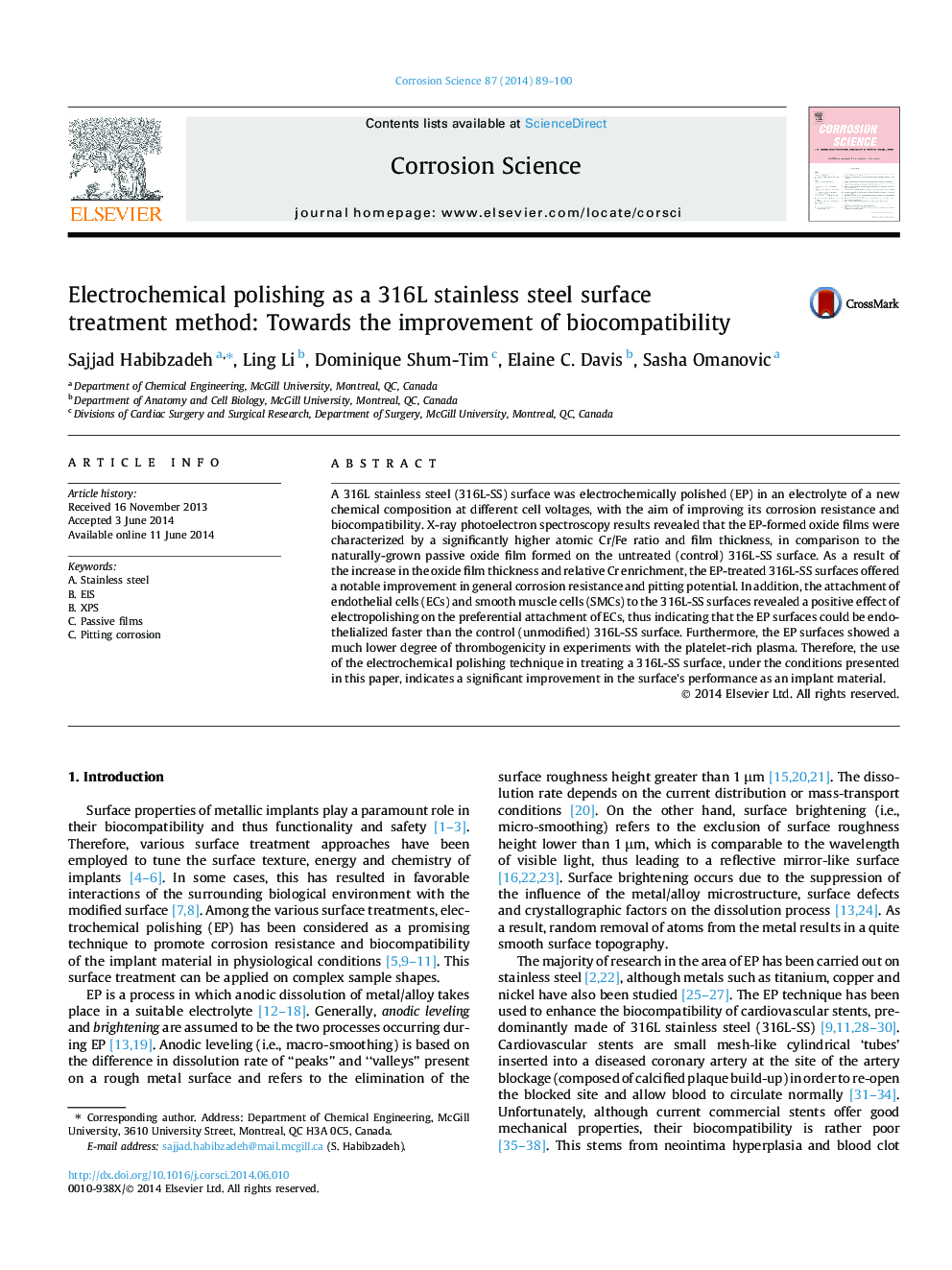| Article ID | Journal | Published Year | Pages | File Type |
|---|---|---|---|---|
| 1468714 | Corrosion Science | 2014 | 12 Pages |
•Electropolishing of 316L stainless steel increases its corrosion resistance.•New electropolishing electrolyte composition is suggested.•Larger thickness and chromium enrichment of the passive film is obtained.•Electropolishing improves the surface biocompatibility and hemocompatibility.
A 316L stainless steel (316L-SS) surface was electrochemically polished (EP) in an electrolyte of a new chemical composition at different cell voltages, with the aim of improving its corrosion resistance and biocompatibility. X-ray photoelectron spectroscopy results revealed that the EP-formed oxide films were characterized by a significantly higher atomic Cr/Fe ratio and film thickness, in comparison to the naturally-grown passive oxide film formed on the untreated (control) 316L-SS surface. As a result of the increase in the oxide film thickness and relative Cr enrichment, the EP-treated 316L-SS surfaces offered a notable improvement in general corrosion resistance and pitting potential. In addition, the attachment of endothelial cells (ECs) and smooth muscle cells (SMCs) to the 316L-SS surfaces revealed a positive effect of electropolishing on the preferential attachment of ECs, thus indicating that the EP surfaces could be endothelialized faster than the control (unmodified) 316L-SS surface. Furthermore, the EP surfaces showed a much lower degree of thrombogenicity in experiments with the platelet-rich plasma. Therefore, the use of the electrochemical polishing technique in treating a 316L-SS surface, under the conditions presented in this paper, indicates a significant improvement in the surface’s performance as an implant material.
